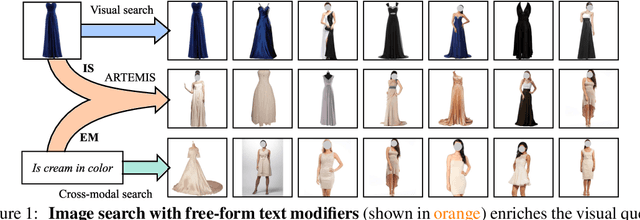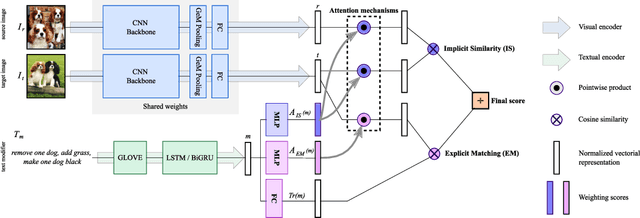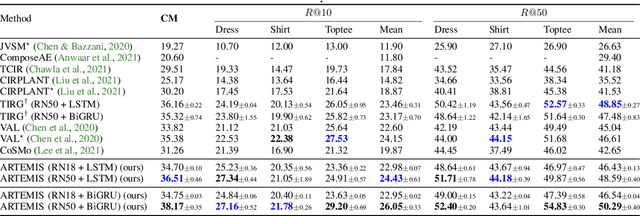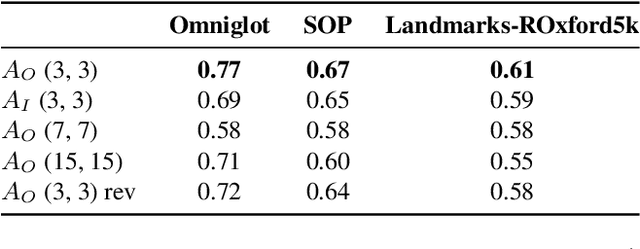Rafael Sampaio de Rezende
AToMiC: An Image/Text Retrieval Test Collection to Support Multimedia Content Creation
Apr 04, 2023



Abstract:This paper presents the AToMiC (Authoring Tools for Multimedia Content) dataset, designed to advance research in image/text cross-modal retrieval. While vision-language pretrained transformers have led to significant improvements in retrieval effectiveness, existing research has relied on image-caption datasets that feature only simplistic image-text relationships and underspecified user models of retrieval tasks. To address the gap between these oversimplified settings and real-world applications for multimedia content creation, we introduce a new approach for building retrieval test collections. We leverage hierarchical structures and diverse domains of texts, styles, and types of images, as well as large-scale image-document associations embedded in Wikipedia. We formulate two tasks based on a realistic user model and validate our dataset through retrieval experiments using baseline models. AToMiC offers a testbed for scalable, diverse, and reproducible multimedia retrieval research. Finally, the dataset provides the basis for a dedicated track at the 2023 Text Retrieval Conference (TREC), and is publicly available at https://github.com/TREC-AToMiC/AToMiC.
ARTEMIS: Attention-based Retrieval with Text-Explicit Matching and Implicit Similarity
Mar 15, 2022



Abstract:An intuitive way to search for images is to use queries composed of an example image and a complementary text. While the first provides rich and implicit context for the search, the latter explicitly calls for new traits, or specifies how some elements of the example image should be changed to retrieve the desired target image. Current approaches typically combine the features of each of the two elements of the query into a single representation, which can then be compared to the ones of the potential target images. Our work aims at shedding new light on the task by looking at it through the prism of two familiar and related frameworks: text-to-image and image-to-image retrieval. Taking inspiration from them, we exploit the specific relation of each query element with the targeted image and derive light-weight attention mechanisms which enable to mediate between the two complementary modalities. We validate our approach on several retrieval benchmarks, querying with images and their associated free-form text modifiers. Our method obtains state-of-the-art results without resorting to side information, multi-level features, heavy pre-training nor large architectures as in previous works.
Simple and Effective Balance of Contrastive Losses
Dec 22, 2021



Abstract:Contrastive losses have long been a key ingredient of deep metric learning and are now becoming more popular due to the success of self-supervised learning. Recent research has shown the benefit of decomposing such losses into two sub-losses which act in a complementary way when learning the representation network: a positive term and an entropy term. Although the overall loss is thus defined as a combination of two terms, the balance of these two terms is often hidden behind implementation details and is largely ignored and sub-optimal in practice. In this work, we approach the balance of contrastive losses as a hyper-parameter optimization problem, and propose a coordinate descent-based search method that efficiently find the hyper-parameters that optimize evaluation performance. In the process, we extend existing balance analyses to the contrastive margin loss, include batch size in the balance, and explain how to aggregate loss elements from the batch to maintain near-optimal performance over a larger range of batch sizes. Extensive experiments with benchmarks from deep metric learning and self-supervised learning show that optimal hyper-parameters are found faster with our method than with other common search methods.
Learning with Label Noise for Image Retrieval by Selecting Interactions
Dec 21, 2021



Abstract:Learning with noisy labels is an active research area for image classification. However, the effect of noisy labels on image retrieval has been less studied. In this work, we propose a noise-resistant method for image retrieval named Teacher-based Selection of Interactions, T-SINT, which identifies noisy interactions, ie. elements in the distance matrix, and selects correct positive and negative interactions to be considered in the retrieval loss by using a teacher-based training setup which contributes to the stability. As a result, it consistently outperforms state-of-the-art methods on high noise rates across benchmark datasets with synthetic noise and more realistic noise.
Probabilistic Embeddings for Cross-Modal Retrieval
Jan 13, 2021



Abstract:Cross-modal retrieval methods build a common representation space for samples from multiple modalities, typically from the vision and the language domains. For images and their captions, the multiplicity of the correspondences makes the task particularly challenging. Given an image (respectively a caption), there are multiple captions (respectively images) that equally make sense. In this paper, we argue that deterministic functions are not sufficiently powerful to capture such one-to-many correspondences. Instead, we propose to use Probabilistic Cross-Modal Embedding (PCME), where samples from the different modalities are represented as probabilistic distributions in the common embedding space. Since common benchmarks such as COCO suffer from non-exhaustive annotations for cross-modal matches, we propose to additionally evaluate retrieval on the CUB dataset, a smaller yet clean database where all possible image-caption pairs are annotated. We extensively ablate PCME and demonstrate that it not only improves the retrieval performance over its deterministic counterpart, but also provides uncertainty estimates that render the embeddings more interpretable.
StacMR: Scene-Text Aware Cross-Modal Retrieval
Dec 08, 2020



Abstract:Recent models for cross-modal retrieval have benefited from an increasingly rich understanding of visual scenes, afforded by scene graphs and object interactions to mention a few. This has resulted in an improved matching between the visual representation of an image and the textual representation of its caption. Yet, current visual representations overlook a key aspect: the text appearing in images, which may contain crucial information for retrieval. In this paper, we first propose a new dataset that allows exploration of cross-modal retrieval where images contain scene-text instances. Then, armed with this dataset, we describe several approaches which leverage scene text, including a better scene-text aware cross-modal retrieval method which uses specialized representations for text from the captions and text from the visual scene, and reconcile them in a common embedding space. Extensive experiments confirm that cross-modal retrieval approaches benefit from scene text and highlight interesting research questions worth exploring further. Dataset and code are available at http://europe.naverlabs.com/stacmr
Learning with Average Precision: Training Image Retrieval with a Listwise Loss
Jun 18, 2019



Abstract:Image retrieval can be formulated as a ranking problem where the goal is to order database images by decreasing similarity to the query. Recent deep models for image retrieval have outperformed traditional methods by leveraging ranking-tailored loss functions, but important theoretical and practical problems remain. First, rather than directly optimizing the global ranking, they minimize an upper-bound on the essential loss, which does not necessarily result in an optimal mean average precision (mAP). Second, these methods require significant engineering efforts to work well, e.g. special pre-training and hard-negative mining. In this paper we propose instead to directly optimize the global mAP by leveraging recent advances in listwise loss formulations. Using a histogram binning approximation, the AP can be differentiated and thus employed to end-to-end learning. Compared to existing losses, the proposed method considers thousands of images simultaneously at each iteration and eliminates the need for ad hoc tricks. It also establishes a new state of the art on many standard retrieval benchmarks. Models and evaluation scripts have been made available at https://europe.naverlabs.com/Deep-Image-Retrieval/
 Add to Chrome
Add to Chrome Add to Firefox
Add to Firefox Add to Edge
Add to Edge